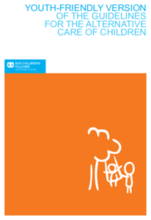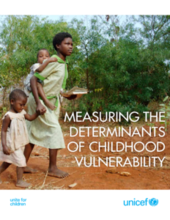Demographic Data
|
Sources: World Bank, UNDP, UNAIDS, DHS 2013 |
Displaying 12241 - 12250 of 14391
This country care review includes the Concluding Observations for the Committee on the Rights of the Child adopted as part of its examination of Sao Tome's combined second to fourth periodic reports at the 64th Session of the Committee held between 16 September to 4 October 2013.
This country care review includes the Concluding Observations for the Committee on the Rights of the Child adopted as part of its examination of Monaco’s combined second and third periodic reports at the 64th Session of the Committee held between 16 September to 4 October 2013.
This country care review includes the Concluding Observations for the Committee on the Rights of the Child and the Committee on the Rights of Persons with Disabilites.
This systematic review published by the Campbell Collaboration reviewed controlled experimental and quasi experimental studies in which children removed from the home for maltreatment and subsequently placed in kinship care were compared with children placed in non-kinship foster care for child welfare outcomes in the domains of well-being, permanency, or safety.
The aim of this audit was to assess how the Ministry of Gender, Labour and Social Development (MOGLSD) is handling the current adoption process of children leaving in a bid to protect their rights and welfare.
This youth-friendly version of the Guidelines for the Alternative Care of Children is an interpretation from members of the I Matter International Youth Council.
This study by UNICEF sought to identify key determinants of vulnerability among children –including those affected by HIV and AIDS – that can contribute to developing an improved global measure of vulnerable children in the context of HIV and AIDS. Data from the most recent available household surveys at the time of analysis was used from 11 countries – Cambodia, Central African Republic, Haiti, Malawi, Rwanda, Sierra Leone, Swaziland, Uganda, United Republic of Tanzania, Zambia and Zimbabwe – were pooled.
This dissertation explores the experiences and representations of child abandonment in urban Johannesburg, South Africa.
Despite the development of alternative forms of care, international and domestic pressures for change, and over 20 years of efforts at deinstitutionalization, the Czech Republic has one of the highest rates of institutionalization of children in E
This online resource provides an overview of research, conducted by the European Union Agency for Fundamental Rights (FRA), on national child protection systems in the 28 European Union (EU) Member States.









